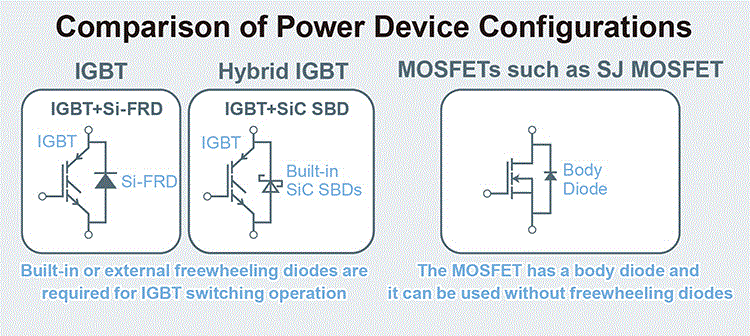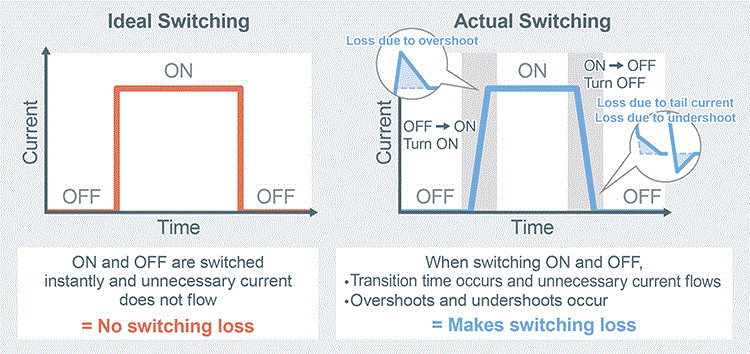Manufacturers
- Abracon
- Adam Tech
- Aerospace, Defense & Marine
- Agastat
- AIC
- AKM Semiconductor
- Alcoswitch
- Allegro
- Alps Electric
- Altera
- AMI Semiconductor
- AMP
- ams
- Analog Devices (ADI)
- Aptina Imaging
- Atmel
- Avago / Broadcom
- AVX
- Axicom
- Bccomponents
- Beyschlag
- BI Technologies
- Bourns Inc.
- Bowei Integrated Circuits
- Bridgelux
- Buchanan
- California Micro Devices
- Catalyst Semiconductor
- CGS
- Cirrus Logic
- Citizen Electronics
- CML Microcircuits
- Coiltronics
- Cooper Bussmann
- Corcom
- Core Logic
- Cree
- CSR PLC
- CTS
- Cypress Semiconductor
- Dale
- Data Image
- Deutsch
- Diodes Incorporated
- DOMINANT Opto Technologies
- E-T-A
- Eaton
- ECS
- Edison Opto
- Elcon
- EPCOS
- Epistar
- Epson
- Everlight Electronics
- Exar
- Fairchild Semiconductor
- FCI
- Freescale Semiconductor
- Fremont Micro Devices (FMD)
- Fujitsu Semiconductor
- Fulltech Electric
- General Semiconductor
- Harvatek
- Holsworthy
- Hsuan Mao Technology
- IDT
- Infineon Technologies
- Innolux
- International Rectifier (IR)
- Intersil
- IRC
- ISSI
- IXYS-IC
- Jing Cheng Electronical
- JL World
- Johanson Dielectrics
- Johanson Technology
- JRC / NJR
- JST
- KEC
- Kilovac
- Kingbright
- Kyocera Industrial Ceramics
- LEDiL
- Linear Technology / ADI
- Lite-On Technology
- Littelfuse
- Lumex
- Lumileds
- Luminary Micro
- Luminus Devices
- Macronix
- Maojwei / ZJPT
- Maxim Integrated
- MCC
- Mean Well Enterprises
- Microchip Technology
- Micron
- Microsemi
- Mini-Circuits
- Molex
- Murata Manufacturing
- Murata Power Solutions
- MWT
- National Semiconductor
- Nichicon
- Nippon Chemi-Con
- NJR / JRC
- NVE
- NXP Semiconductors
- OEG
- Omnivision
- ON Semiconductor
- Optek Technology
- Optrex
- OSRAM Opto Semiconductors
- OTAX
- Panasonic
- Peregrine(pSemi)
- Potter & Brumfield
- Power Integrations
- PowerStor
- Preci-Dip
- Prewell
- Products Unlimited
- Pulse Electronics
- PulseCore Semiconductor
- Qorvo
- Raychem
- Renesas Electronics
- RFMD
- Richtek Technology
- ROHM Semiconductor
- Rubycon
- Samsung Electro-Mechanics
- Samsung Semiconductor
- Schaffner
- Schrack
- Seiko Instruments, Inc. (SII)
- Semtech
- Sensata
- Seoul Semiconductor
- Sfernice
- Sharp Display
- Sharp Microelectronics
- Silicon Labs
- Siliconix
- Skyworks Solutions
- SoniCrest / JL World
- Spansion
- Sprague
- Stanley Electric
- STMicroelectronics
- Sunny Electronics
- Susumu (SSM)
- Taimag
- Taiyo Yuden
- TDK
- TDK-Lambda
- TE Connectivity
- Teccor
- Texas Instruments (TI)
- Thin Film
- Tianma Micro-electronics
- TOCOS
- TOKO
- Toshiba Electronic Components
- TT Electronics
- Tusonix
- TXC
- Tyntek
- Vishay
- Vishay Precision Group
- Vitramon
- Walsin Technology
- Weidmuller
- Welwyn
- Wickmann
- Winbond
- Xilinx
- Yageo
- Zetex Semiconductors
- ZJPT / Maojwei
新闻中心
ROHM’s New Hybrid IGBTs with Built-In SiC Diode
2021-07-19 | 返回 under the AEC-Q101 automotive reliability standard. They are ideal for automotive and industrial applications that handle large power, such as photovoltaic power conditioners, onboard chargers, and DC/DC converters used in electric and electrified vehicles (xEV).
under the AEC-Q101 automotive reliability standard. They are ideal for automotive and industrial applications that handle large power, such as photovoltaic power conditioners, onboard chargers, and DC/DC converters used in electric and electrified vehicles (xEV).The RGWxx65C series utilizes ROHM’s low-loss SiC Schottky barrier diodes in the IGBT’s feedback block as a freewheeling diode that has almost no recovery energy and thus minimal diode switching loss. Additionally, since the recovery current does not have to be handled by the IGBT in turn-on mode, the IGBT turn-on loss is reduced significantly. Both effects together result in up to 67% lower loss over conventional IGBTs and 24% lower loss compared with Super Junction MOSFETs (SJ MOSFETs) when used in vehicle chargers. This effect provides good cost performance while contributing to lower power consumption in industrial and automotive applications.
In recent years, global efforts to reduce environmental burden and achieve a carbon-neutral and decarbonized society have spurred the proliferation of electrified vehicles (xEV). At the same time, the diversification of power semiconductors used in various vehicle inverter and converter circuits necessary to configure more efficient systems is currently underway, along with technological innovation of both ultra-low-loss SiC power devices (i.e. SiC MOSFETs, SiC SBDs) and conventional silicon power devices (e.g. IGBTs, Super Junction MOSFETs).

To provide effective power solutions for a wide range of applications, ROHM is focusing not only on product and technology development for industry-leading SiC power devices, but for silicon products and driver ICs as well.
A variety of design support materials are also available on ROHM’s website, including SPICE models and application notes on drive circuit design necessary for integration and evaluation, supporting quick market introduction. ROHM is committed to continuing to contribute to minimizing environmental impact through system low power consumption and miniaturization by developing low-loss power devices that meet different needs and offering design tools as a solution.
Key Features
• Reduces loss by 67% vs conventional IGBTs, providing optimal cost performance for popular automotive electrical control units and industrial equipment
The breakthrough RGWxx65C series utilizes an SiC SBD as the freewheeling diode for the IGBT. ROHM low-loss SiC SBDs significantly reduce turn ON loss over silicon fast recovery diodes (FRDs) used in conventional IGBTs. This reduces loss by 67% over conventional IGBTs and 24% over SJ MOSFETS (which generally provides lower loss than IGBTs) when used in vehicle chargers. Furthermore, a high efficiency of over 97% is ensured over a wide operating frequency range when we use this device for automotive charger – 3% higher than existing IGBTs at 100kHz – contributing to lower power consumption and good cost performance in automotive and industrial equipment applications.


• AEC-Q101 qualification enables use under harsh environments These devices are qualified under the AEC-Q101 automotive standard for reliability, ensuring worry-free use even under severe conditions.
Design Support Materials
A broad range of design data is also available on ROHM’s website, including simulation (SPICE) models and application notes on drive circuit design necessary for integration and evaluation that supports quick market introduction. Click on the URL below for more information.
https://www.rohm.com/products/igbt/field-stop-trench-igbt?PS_BuiltInDiode=SiC-SBD
Pricing: $9.055/unit (samples, excluding tax)
Availability: March 2021 (samples), December 2021 (In mass production)
Application Examples
> Automotive chargers (onboard chargers)
> Vehicle DC/DC converters
> Solar power inverters (power conditioners)
> Uninterruptible power supplies (UPS)
| Part No. |
Withstand Voltage VCES(V) |
Collector Current IC@100ºC (A) |
Conduction Loss VCE(sat) Typ (V) |
Freewheeling Diode |
AEC-Q101 Qualified |
Package |
| NEWRGW60TS65CHR |
650 |
30 |
1.5 |
SiC SBD |
Yes |
TO-247N |
| NEWRGW80TS65CHR |
40 |
|||||
| NEWRGW00TS65CHR |
50 |
|||||
| ☆RGW40NL65CHRB |
20 |
TO-263L (LPDL) |
||||
| ☆RGW50NL65CHRB |
25 |
|||||
| ☆RGW60NL65CHRB |
30 |
Package indicated JEDEC code. () denotes ROHM package type
*In addition to these novel Hybrid IGBTs, we offer products utilizing silicon FRDs as the freewheeling diode as well as products without a freewheeling diode. Click on the URL below for more information.
https://www.rohm.com/products/igbt/field-stop-trench-igbt?SearchWord=rgw
Terminology
AEC-Q101 Automotive Reliability Standard
AEC stands for Automotive Electronics Council, an organization (comprised of major automotive manufacturers and US electronic component makers) responsible for establishing reliability standards for automotive electronics. The Q101 standard is specifically intended discrete semiconductor products (i.e. transistors, diodes).
IGBT (Insulated Gate Bipolar Transistor) / SJ MOSFET (Super Junction Metal Oxide Semiconductor Field Effect Transistor)
Both are a type of power semiconductor generally produced using silicon substrates but featuring different device structures. IGBTs can be produced more cheaply than other products, but present problems in terms of switching loss when turned OFF (turn OFF loss) and require freewheeling diode for operation (two chips configuration), while SJ MOSFETs feature lower turn OFF loss and require no freewheeling diode for operation (one chip configuration), but have difficulty handling large power. As one of the breakthrough products, Hybrid IGBTs - incorporating SiC SBDs (not conventional Si-FRDs) into IGBTs as freewheeling diode - were developed to reduce the loss.

Turn ON/OFF Loss
Both refer to losses that occur when a semiconductor device such as a transistor is switched (switching loss). As their names imply, turn ON and OFF losses are generated when the element turns ON and OFF, respectively.
Ideally, these losses should be zero, but in reality, when switching ON and OFF unwanted current inherently flows due to the structure, causing losses, making it particularly important to minimize these losses in power semiconductors.

Source: http://www.rohm.com/





